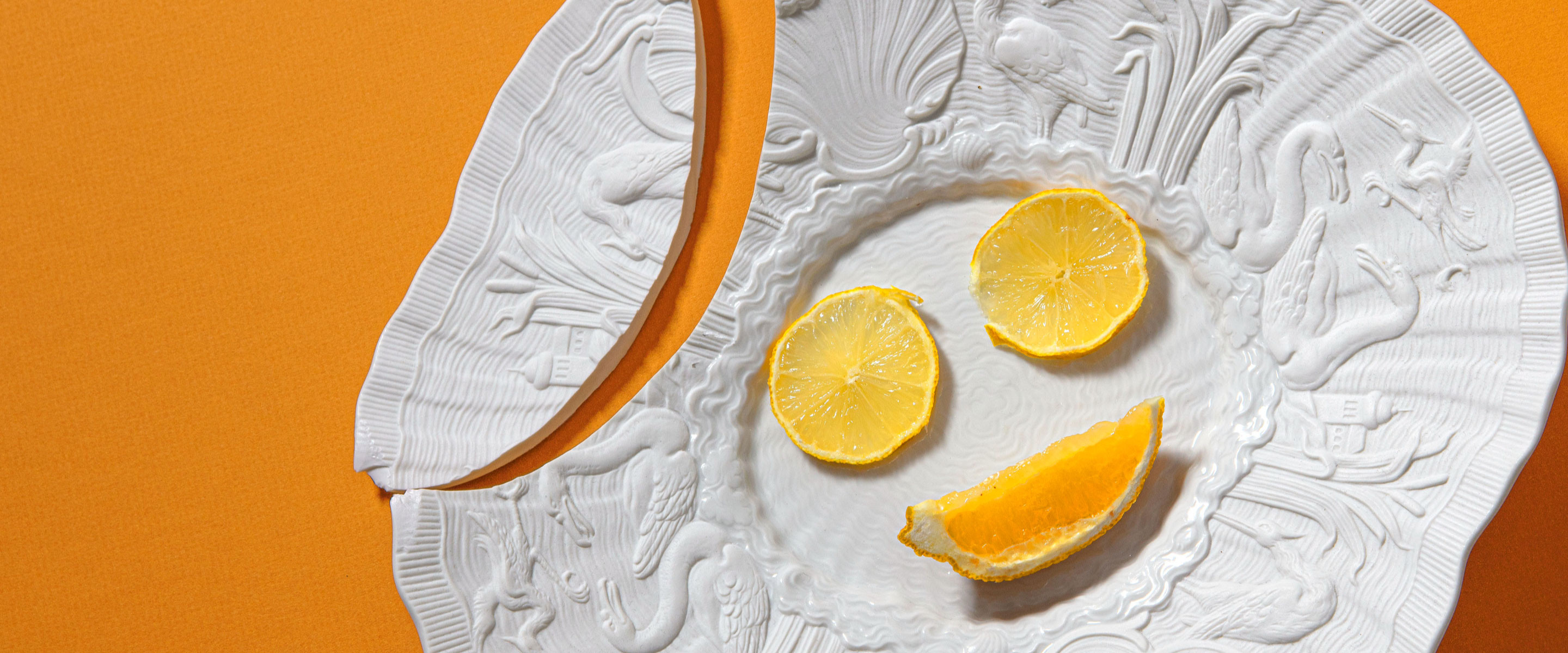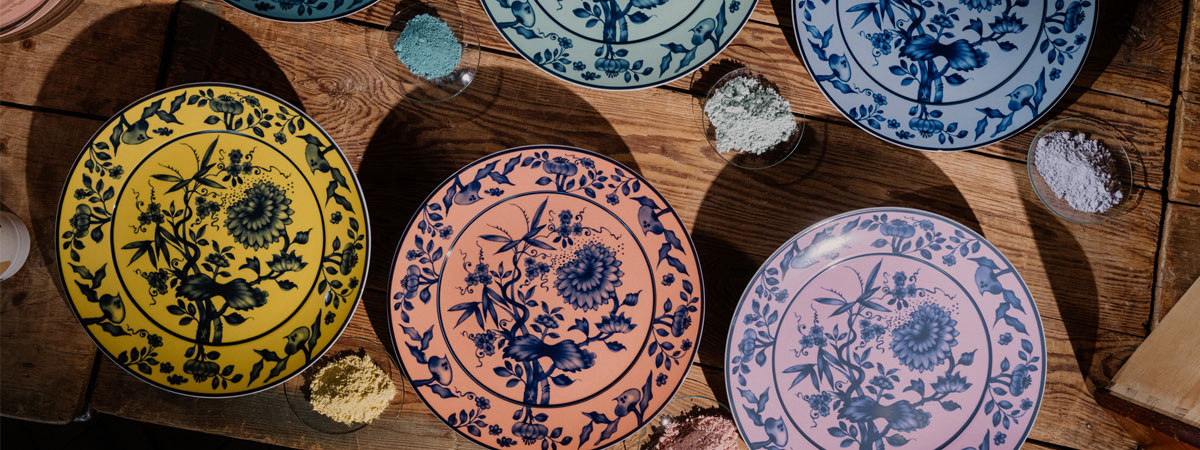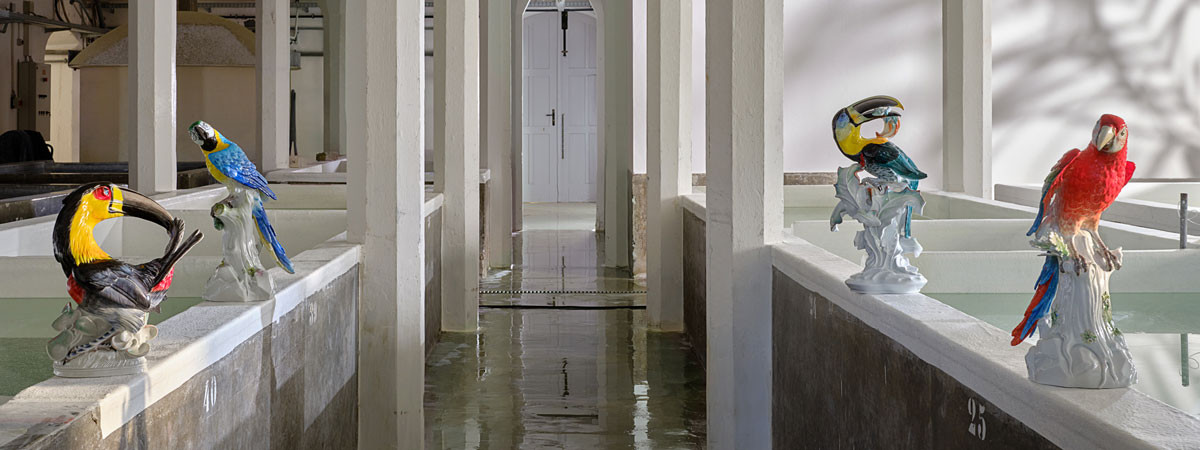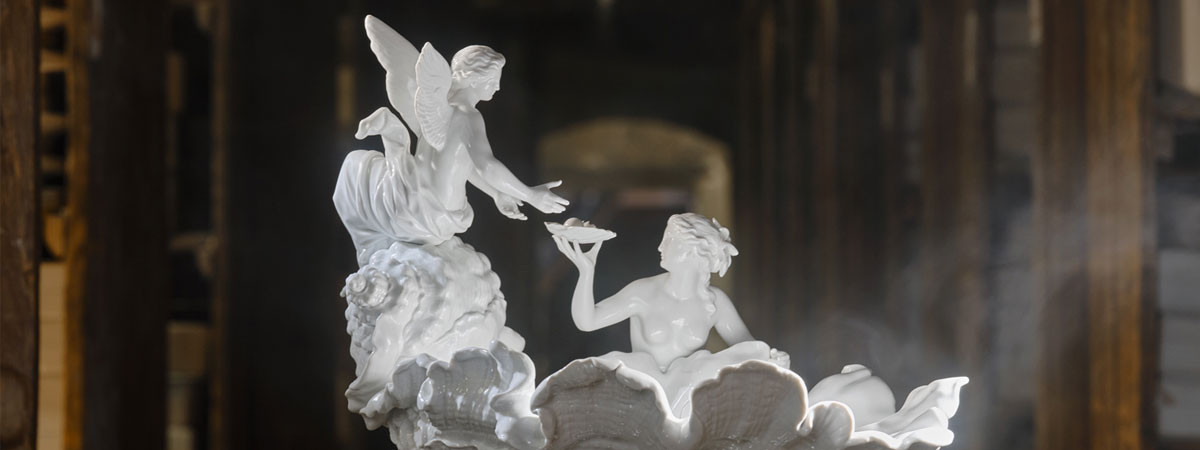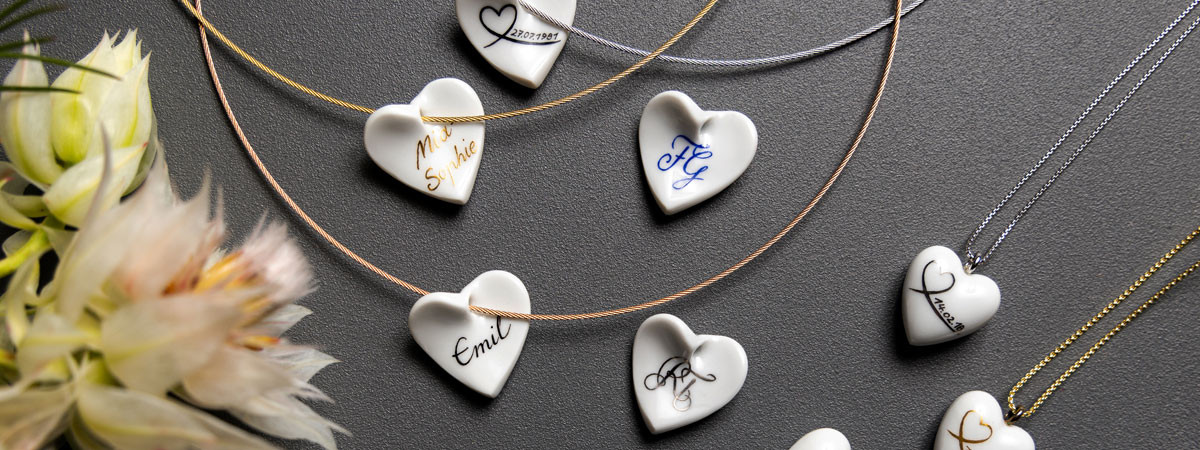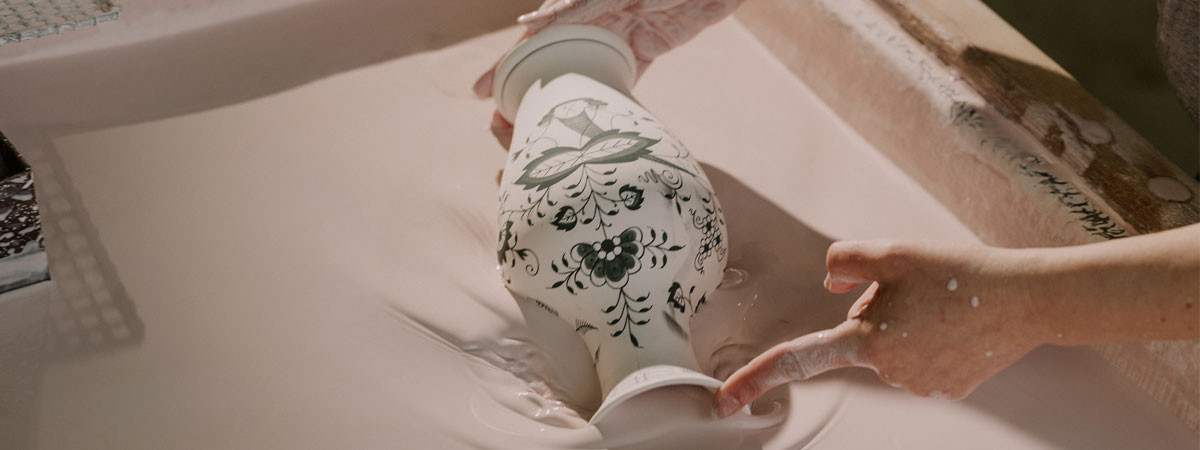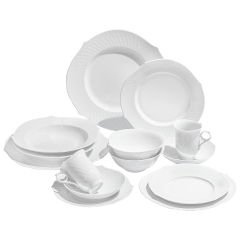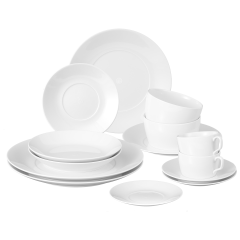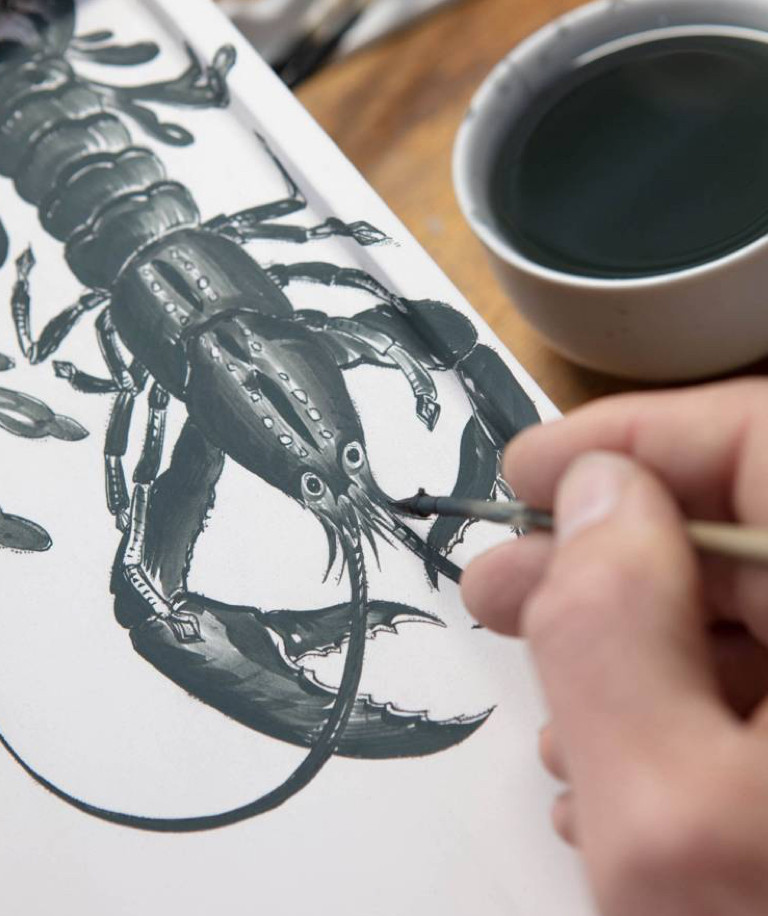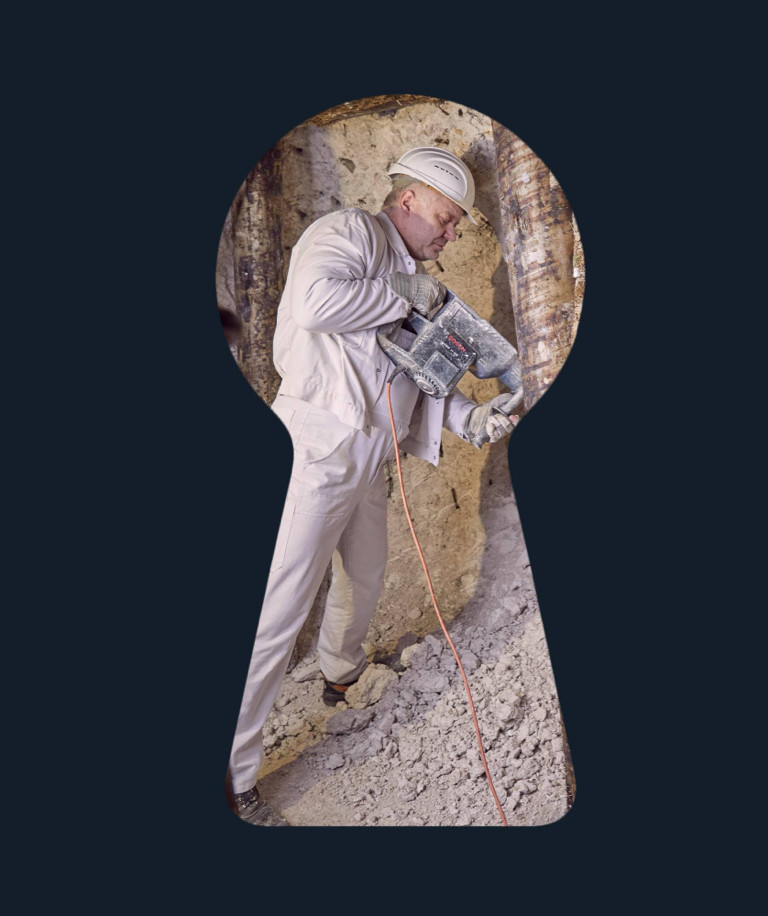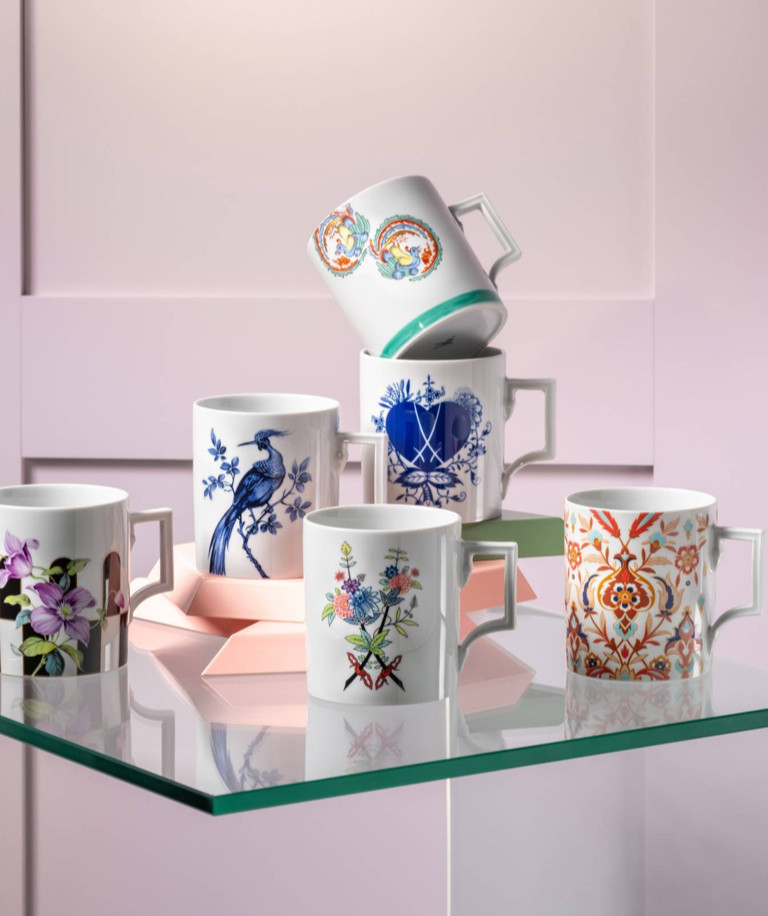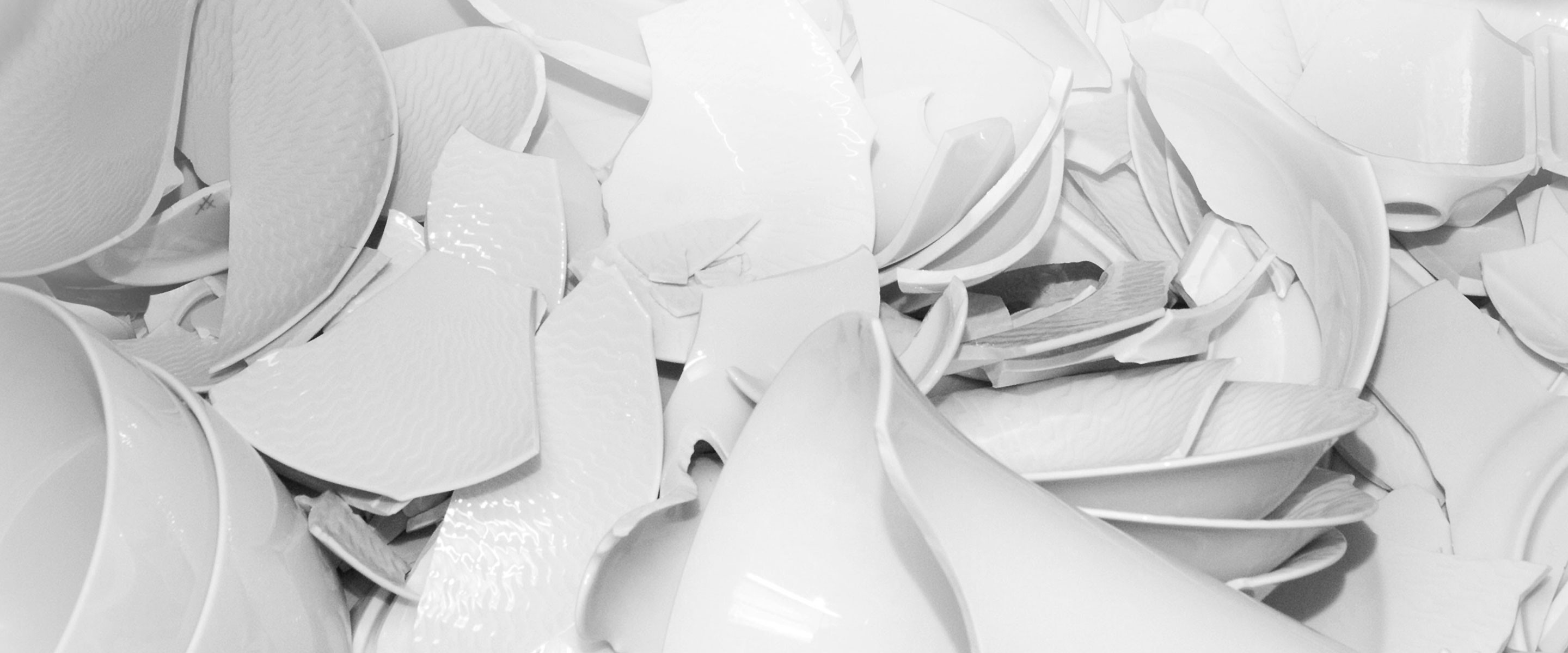
Shards bring luck -
Why broken porcelain is a lucky charm in Germany
#pieceofluck
-
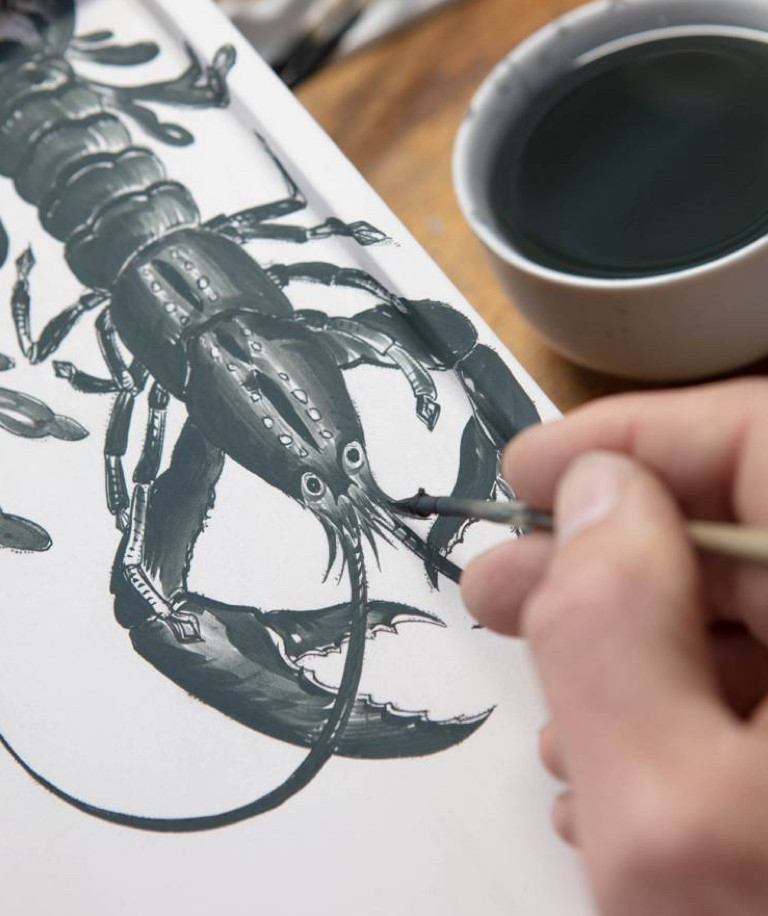 In German parlance, if you want to say that someone should behave mindfully or treat something with care, you can say „Vorsicht ist die Mutter der Porzellankiste“ (literally: „caution is the mother of the porcelain box“). If you have no sensitivity at all in such situations and often behave clumsily, awkwardly or tactlessly, you are behaving „Wie ein Elefant im Porzellanladen“ (literally: „like an elephant in a porcelain store“) in Germany. And anyone who has to accept a major loss is literally faced with a „Scherbenhaufen“, which means a pile of shards. And so there are some sayings that give warnings before breaking something valuable like porcelain or associate broken pieces with loss. It is all the more surprising that a proverb with a seemingly contradictory message has become established: „Scherben bringen Glück“ or „Shards bring luck“. But why should broken pieces of porcelain bring luck? Where does this proverb come from? And what is the deeper meaning behind it? We take a look at it.
In German parlance, if you want to say that someone should behave mindfully or treat something with care, you can say „Vorsicht ist die Mutter der Porzellankiste“ (literally: „caution is the mother of the porcelain box“). If you have no sensitivity at all in such situations and often behave clumsily, awkwardly or tactlessly, you are behaving „Wie ein Elefant im Porzellanladen“ (literally: „like an elephant in a porcelain store“) in Germany. And anyone who has to accept a major loss is literally faced with a „Scherbenhaufen“, which means a pile of shards. And so there are some sayings that give warnings before breaking something valuable like porcelain or associate broken pieces with loss. It is all the more surprising that a proverb with a seemingly contradictory message has become established: „Scherben bringen Glück“ or „Shards bring luck“. But why should broken pieces of porcelain bring luck? Where does this proverb come from? And what is the deeper meaning behind it? We take a look at it.
The origin of the superstitious phrase is not clear and has several possible scenarios as its origin. The first possibility goes back to the superstition that noise should drive away evil spirits. Plates and cups made of ceramics or porcelain thrown to the ground clinked particularly loudly and were thus responsible for good luck. Thus, it is the custom in Germany to celebrate the „Polterabend“ before a wedding, during which porcelain is broken so that the marriage will be under a good star. Another option for the origin: in earlier usage, in some regions even today, the word „Scherben“ generally refers to pottery made of clay or porcelain. And also storage vessels made of these materials were so called. With well-filled storage vessels, or „Scherben“, people were lucky to have enough food. Or another possibility: maybe people just got into the habit of cheering up and comforting people who had an expensive piece of porcelain broken. „Cheer up, don't fret. Shard bring luck.“
„Even if everything breaks, the shards reflect the light“
Kontra K
Kontra K
-
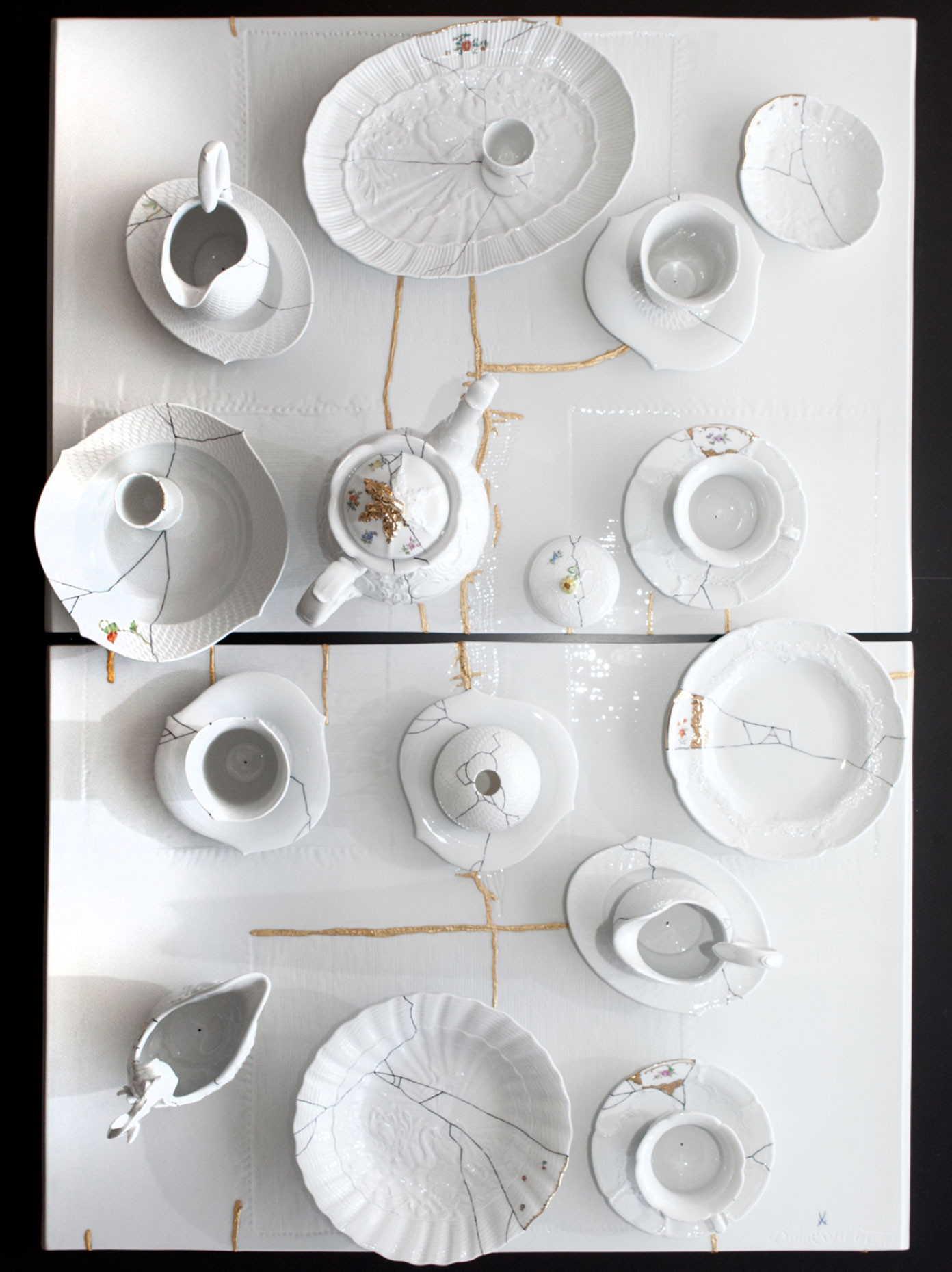 A little insight: Even at the MEISSEN porcelain manufactory, things get broken from time to time. Whether in production, in sales or even sometimes in the online editorial office. We work with porcelain all day long, so it can happen. Even though porcelain from MEISSEN is very robust and resistant in everyday use, it is not unbreakable. Like many other natural raw materials, porcelain from MEISSEN also breaks when it is being dropped. Of course, you are not happy if you accidentally break the valuable work of a valued colleague, despite the greatest respect and caution. But here you know that it can happen, and statistically it happens to everyone at least once. And so these moments of acceptance and understanding forge an invisible bond of solidarity. We can't undo the past, but we can use it as a driving force to support each other and move forward.
A little insight: Even at the MEISSEN porcelain manufactory, things get broken from time to time. Whether in production, in sales or even sometimes in the online editorial office. We work with porcelain all day long, so it can happen. Even though porcelain from MEISSEN is very robust and resistant in everyday use, it is not unbreakable. Like many other natural raw materials, porcelain from MEISSEN also breaks when it is being dropped. Of course, you are not happy if you accidentally break the valuable work of a valued colleague, despite the greatest respect and caution. But here you know that it can happen, and statistically it happens to everyone at least once. And so these moments of acceptance and understanding forge an invisible bond of solidarity. We can't undo the past, but we can use it as a driving force to support each other and move forward.
If we look at the whole thing a bit philosophically, the happiness behind shards becomes even clearer. In life, we often encounter challenges and setbacks that seem like a broken piece of porcelain. But instead of being discouraged by the broken pieces, we can see them as opportunities. For in every breakage lies the possibility for growth, change and new beginnings. We can reassemble the shards of our lives and thereby create a new, perhaps even more beautiful version of ourselves or our surroundings.
Sometimes this is how entirely new works of art are created from the pieces. For example, the well-known visual artist Daniel Spoerri modeled the unique piece „Der Zerbochene“ (literally: „The Broken“) for MEISSEN, which reassembles pieces of various crashed table & dinner services into a unique work of art. However, the reuse of broken porcelain is not an isolated case. A variety of selected porcelain shards are finely pulverized, and added to the next porcelain mass. This has the advantage that individual components have already been fired before and therefore the firing temperature for the new mass does not have to be as high. This ensures stabilization in the manufacturing process and a higher quality end product. Large elaborate figurines, opulent vases and the magnificent masterpieces particularly benefit from this.
But instead of picking up the pieces and making something new out of them, maybe it's the right time to let go, look ahead, and move on to new things. When the beloved onion pattern service breaks, it's sad. But we also have beautiful, new services for table and dining in our portfolio. How about, for example, the swan service, the „VITRUV“ collection or „The MEISSEN COLLAGE“?
